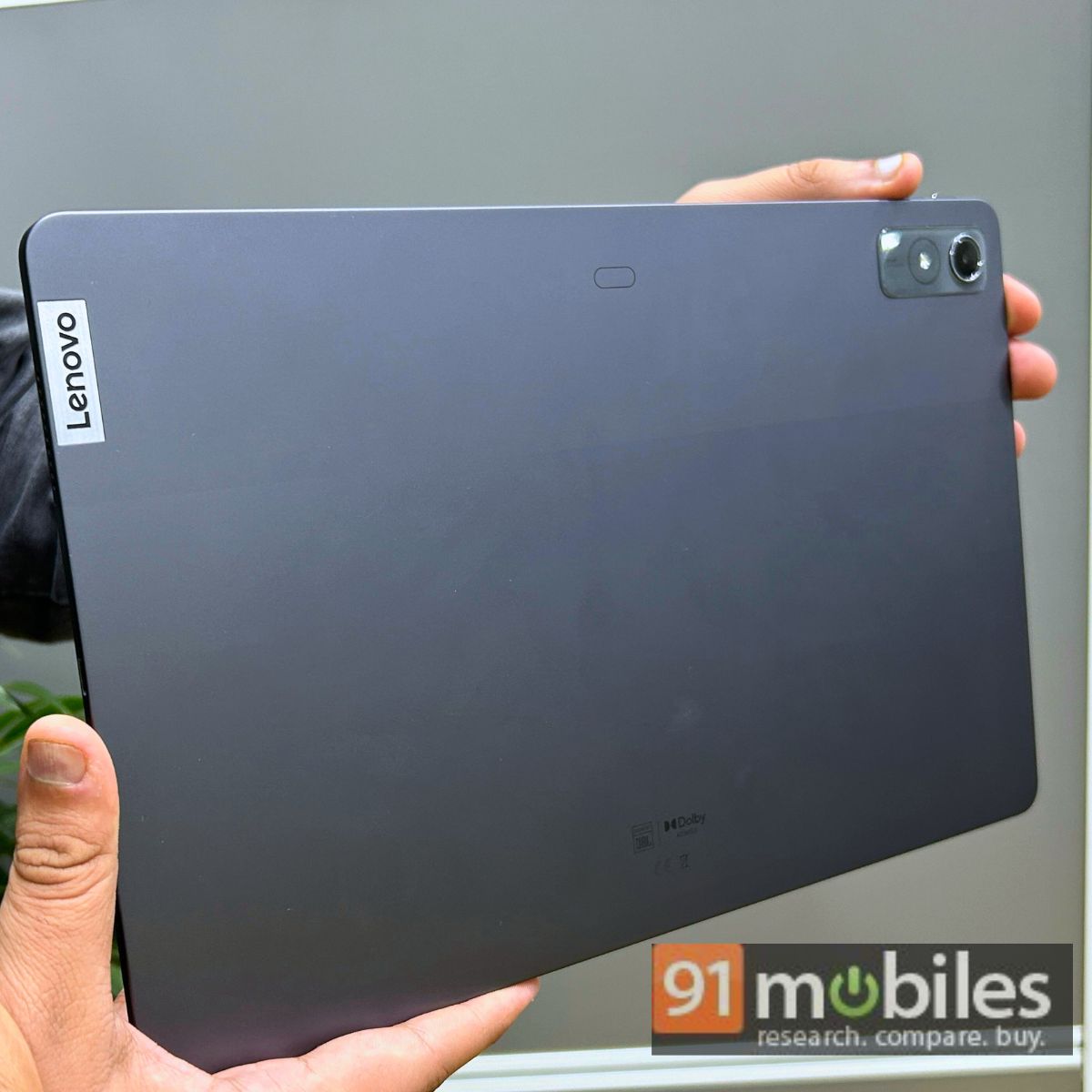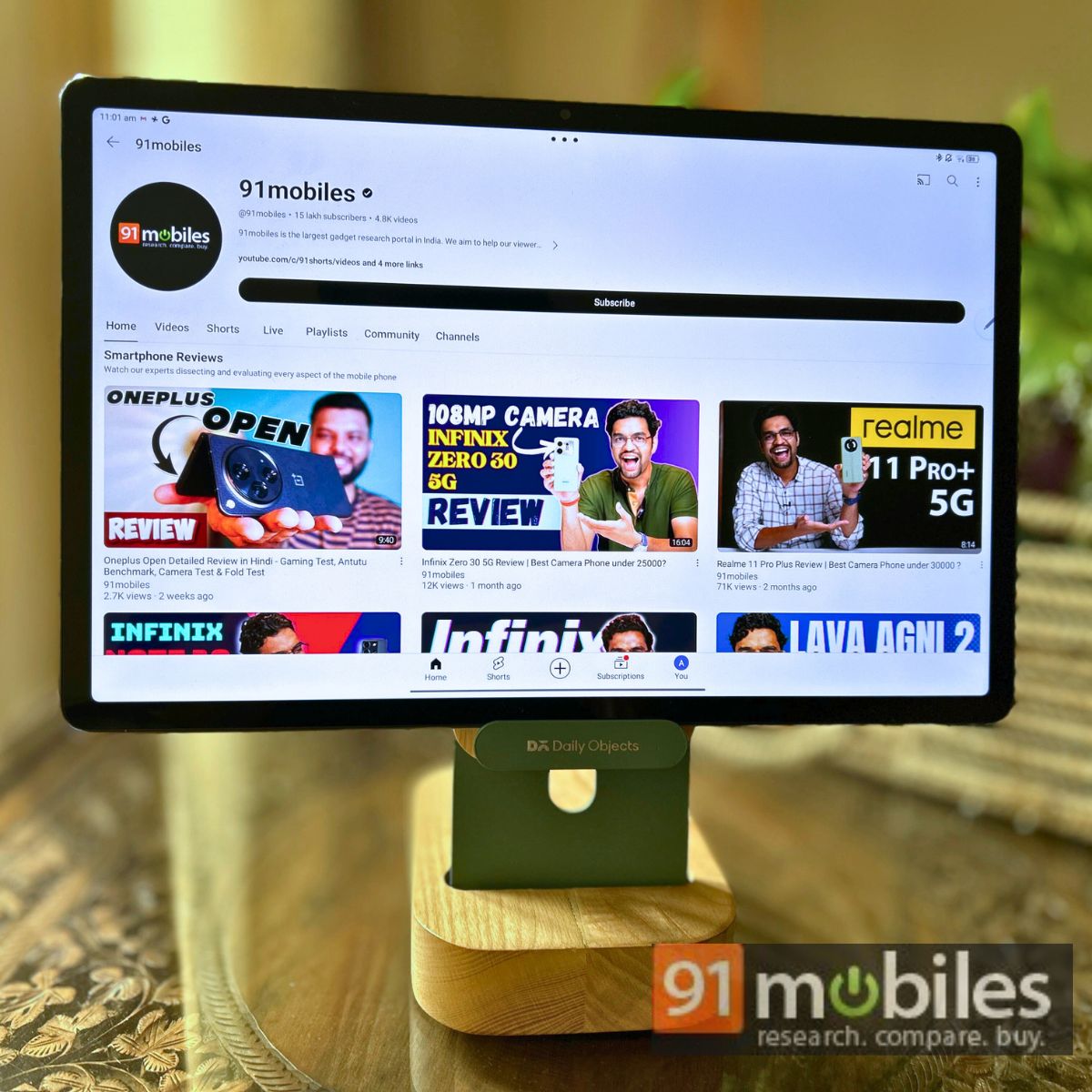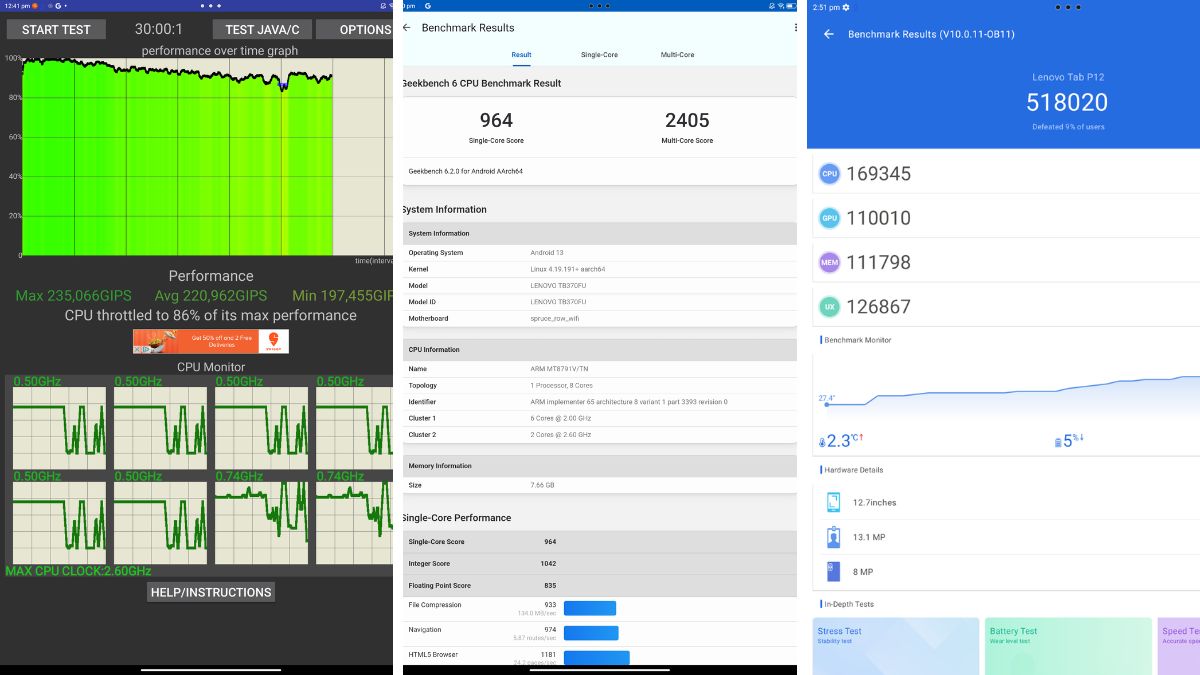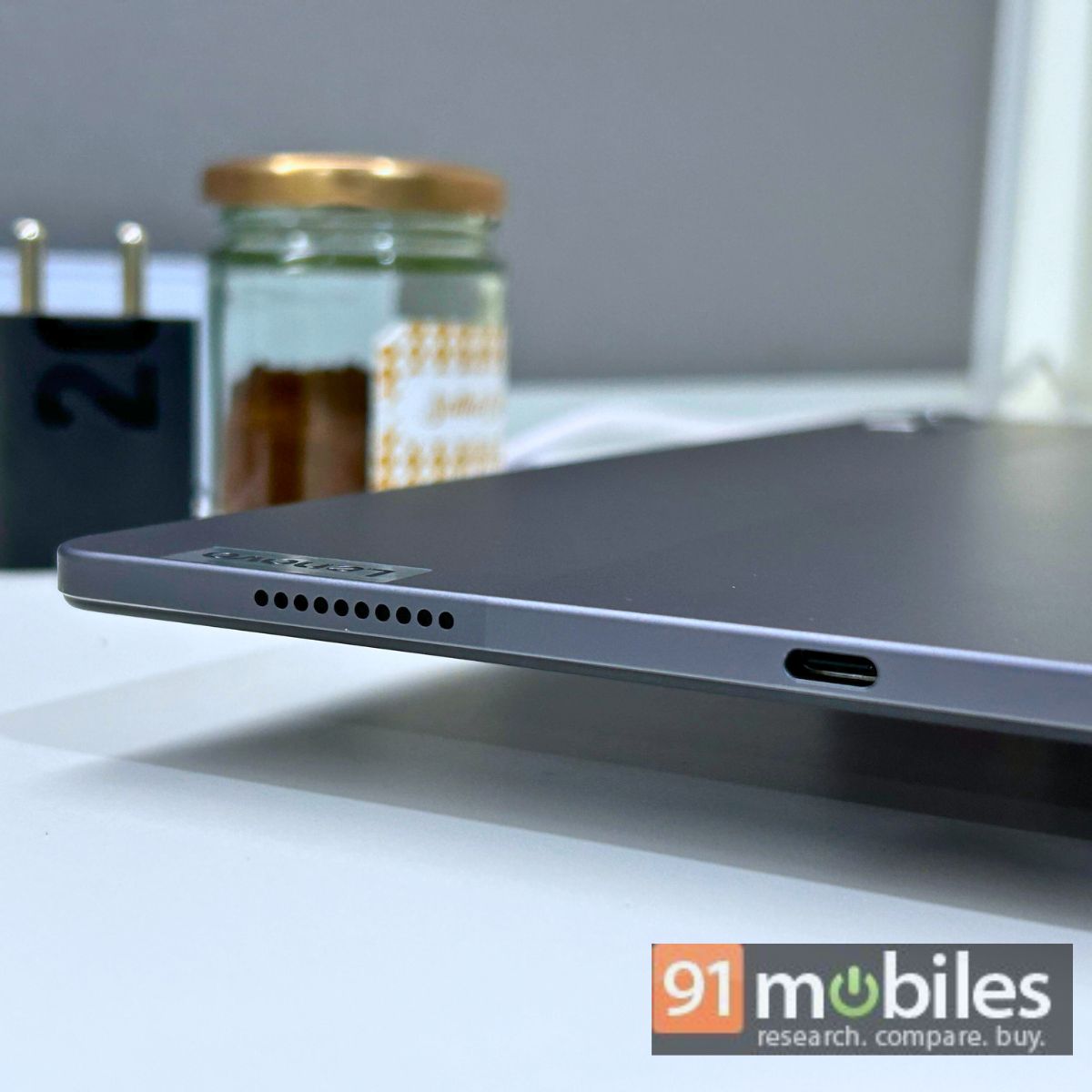If you’re looking for an affordable tablet with a giant screen, Lenovo’s Lenovo Tab P12 may catch your attention. It boasts a 12.7-inch LCD with 3K resolution (2,944 x 1,840 pixels). There are quad JBL speakers with Dolby Atmos support to complement the viewing experience. You can also expect some laptop-like performance if you purchase the Lenovo keyboard folio and Tab Pen Plus.
But at Rs 25,999, the Lenovo Tab P12 (128GB) competes against the Rs 24,999-worth Xiaomi Pad 6 128GB (review). Both Lenovo and Xiaomi tablets also have variants with 256GB storage at Rs 27,999 and Rs 26,999 (256GB), respectively. Interestingly, the Xiaomi Pad 6 features a relatively smaller and squarish screen, but it draws power from the Snapdragon 870 SoC. Mind you, the same chipset powers the “Pro” version of the Lenovo Tab P12 Pro of last year, which is much more expensive at Rs 49,999.

The Xiaomi Pad 6 with the Qualcomm chipset performs better, but the Lenovo Tab P12 with the moderately powerful MediaTek chipset gets the work. Depending on your priority, both are decent options in the sub-Rs 30k category. In that case, which one should you pick? Let’s find out.
Design and display
The Lenovo Tab P12 carries a large 12.7-inch display, though its shape may not be everyone’s cup of tea. Its rectangular sleek form factor can be great for viewing movies, but it might be difficult to hold in the same position for long. A squarish design like that of Apple’s 12.9-inch iPad Pro would’ve been ergonomically friendlier.

The sides of the Tab P12 also include almost all the standard buttons, with the power button doubling as a fingerprint scanner. There’s no 3.5mm audio jack though.
Fortunately, Lenovo has made no compromises with the build quality. The Lenovo Tab P12 features a metal frame, and the dual-tone finish provides a premium look and feel. I do not see substantial differences between the vanilla model and the Tab P12 Pro in terms of build. The display size is also more or less the same, but the Pro leverages an AMOLED panel for a richer viewing experience.
But the Tab P12 offers a good viewing experience, if not the best, thanks to a combination of a large screen and some software modifications, including HDR10 support. Brightness could’ve been better, at least for those low-light shots in movies. The colour calibration is decent – neither too punchy nor too dull for my taste. Of course, you can tweak display settings according to your preference. To test the display, I rewatched Loki season 1 and 2 episodes and didn’t face any substantial issues barring some low-light shots. Live sports in Full HD on Disney+ Hotstar didn’t look bad either. If you’re an avid reader, this screen size is excellent.

Some popular display features are missing on the Lenovo Tab P12, like a 120Hz refresh rate and a reliable reading mode, which the Xiaomi Pad 6 offers (Tab P12’s reading mode is subpar). Standard 60Hz refresh rate drastically improves the battery life, but competitors may boast higher refresh rates on their tablets. Lenovo can consider amping up the refresh rate on its next-gen Android tablets just to stay up-to-date. Overall, the Tab P12 won’t disappoint from a movie-viewing and reading perspective.
Performance and software
The Lenovo Tab P12 draws power from MediaTek’s Dimensity 7050 SoC. The Pro model, on the other hand, leverages a Qualcomm chipset. The variant I reviewed packs 8GB of LPPDR4X RAM and 256GB of UFS 2.2 storage.

The Lenovo Tab P12 performed better than the Rs 23,999-worth OnePlus Pad Go (review) in various benchmarks. The Dimensity 7050 SoC on the Lenovo Tab P12 also turned out to be a decently stable chipset in the throttle test. However, the Xiaomi Pad 6 with the Snapdragon 870 SoC performed better in almost all performance-oriented benchmarks.
In my day-to-day experience, the Lenovo Tab P12 worked reliably well, especially for multimedia consumption. There are noticeable stutters while switching between apps, but nothing substantial. The Tab P12 runs on Android 13-based Lenovo ZUI 15. The custom OS carries a few pre-installed apps, though the user interface is mostly clean. My favourite is the Lenovo Freestyle app that lets you mirror the PC screen on the tablet. Lenovo promises two years of Android and four years of security updates, which is decent if we look at the segment.

The Lenovo Tab P12 can double up as a laptop for light browsing and some school work with Google apps, but it’s best not to get your hopes high. For that, you can refer to our best laptops lists. Lenovo also sells a Lenovo Tab Pen Plus at Rs 5,000 (MRP) separately, which is straightforward to set up. While the Tab Pen Plus can be used for doodling and taking quick pictures with the camera app (works reliably), professional and semi-professional creators may expect more versatility. Moreover, some creator-favourite tablet apps, like Procreate, remain unavailable on Google Play.
The Lenovo Tab P12 includes a single 13MP rear camera and an 8MP selfie camera. The camera performance is average at best under controlled lighting conditions. Pictures taken under low light conditions tend to carry noise and muted colours. The sharpness across most low-light photos is also low, likely to reduce the appearance of more noise. The microphones work fine for video calling, but there is room for improvement in image quality.
Battery life
So far it’s evident that the Lenovo Tab P12 is best suited for reading and media consumption, and these use cases further get amplified by a solid battery life. That’s also because the tablet carries a large 10,200mAh battery. In my usage, I was able to watch a 2-hour long movie, plus an hour worth of YouTube video playback, even with 50 percent charge. It also involved lengthy reading time and the tablet was still left with 5 percent battery.

But the really good battery gets somewhat shadowed by slow charging. With the bundled 20W charger, the Lenovo Tab P12 attained roughly 25 percent battery in 30 minutes. A full charge can take up to two hours.
Verdict
The Lenovo Tab P12 is a decent Android tablet with a reasonable price tag. However, if you want some extra juice in the system for more efficient multitasking, the Xiaomi Pad 6 still remains a great option. If you’re not picky about the large display, the OnePlus Pad Go is also a decent alternative. Notably, the OnePlus Pad Go also has an LTE variant, which Lenovo does not offer with its Tab P12.
That said, For those seeking a tablet to declutter apps from their smartphones, read, and watch movies, the Tab P12 won’t disappoint. Overall, the Lenovo Tab P12 gets the basics done, with its large display being one of the key features that work in its favour.
Editor’s rating: 7.5 / 10
Pros
- Good large display
- Clean Android OS
- Excellent speakers
- Solid battery backup
Cons
- Slow charging
- Subpar processor
The post Lenovo Tab P12 review: an affordable, no-frills tablet ideal for avid readers first appeared on 91mobiles.com.
0 Comments